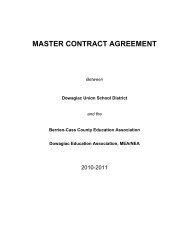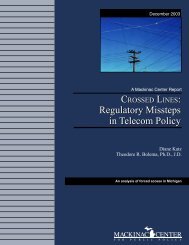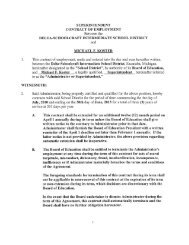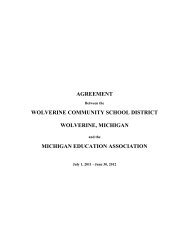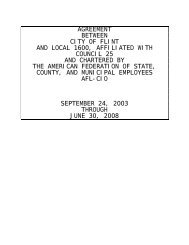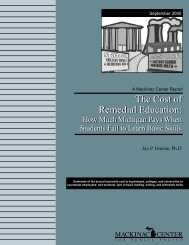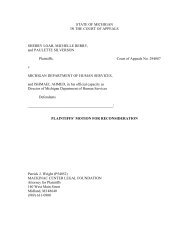by Michael Van Beek - Michigan Virtual University
by Michael Van Beek - Michigan Virtual University
by Michael Van Beek - Michigan Virtual University
Create successful ePaper yourself
Turn your PDF publications into a flip-book with our unique Google optimized e-Paper software.
<strong>Virtual</strong> Learning in <strong>Michigan</strong>’s Schools 1Introduction: What Is “<strong>Virtual</strong> Learning”?Personal computers and the Internet have revolutionized entire sectors ofAmerican society. Facebook, Twitter, YouTube, Skype and other online communicationsmedia have allowed billions of people around the world to shareideas in a matter of seconds, mostly at a very low cost. These advances in computertechnology are as remarkable as they are familiar.But most people are not aware of how computers and Internet technology aretransforming the way students learn. This emerging education paradigm is oftencalled “virtual learning,”* and it has the potential to improve student achievement,educational access and schools’ cost-effectiveness.Specifically, virtual learning uses computer software, the Internet or bothto deliver instruction to students. This minimizes or eliminates the needfor teachers and students to share a classroom. <strong>Virtual</strong> learning does notinclude the increasing use of e-mail or online forums to help teachers bettercommunicate with students and parents about coursework and studentprogress; as helpful as these learning management systems are, they do notchange how students are taught.* “<strong>Virtual</strong> learning” is alsoknown as “digital learning” or“e-learning.”<strong>Virtual</strong> learning comes in several forms:• Computer-Based: Instruction is not provided <strong>by</strong> a teacher; instead,instruction is provided <strong>by</strong> software installed on a local computer or server.This software can frequently customize the material to suit the specific needsof each student.• Internet-Based: This is similar to computer-based instruction, but in this case,the software that provides the instruction is delivered through the Web andstored on a remote server.• Remote Teacher Online: Instruction is provided <strong>by</strong> a teacher, but that teacheris not physically present with the student. Instead, the teacher interacts withthe student via the Internet, through such media as online video, onlineforums, e-mail and instant messaging.• Blended Learning: This combines traditional face-to-face instruction,directed <strong>by</strong> a teacher, with computer-based, Internet-based or remoteteacher online instruction. In effect, instruction comes from two sources:a traditional classroom teacher, and at least one of the forms of virtuallearning described above.• Facilitated <strong>Virtual</strong> Learning: This is computer-based, Internet-based or remoteteacher online instruction that is supplemented <strong>by</strong> a human “facilitator.” Thisfacilitator does not direct the student’s instruction, but rather assists theMackinac Center for Public Policy



